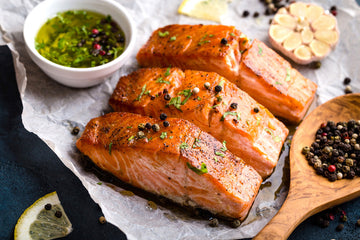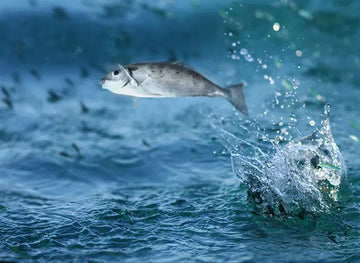Shelf life of food is defined as the maximum length of time food is fit for human consumption. Fish is highly perishable food and numerous changes take place during processing and storage. The shelf life of fish count from once the fish is taken from the water until it is no longer fit for human consumption. Fish is highly perishable, and freshness is a major contributor to the quality of fish products.
VTF provides an extra grade quality assured fish fillets directly from bio secured fish farms to customer doorsteps through a FSSAI certified fish processing unit. The chain of quality process involved are as follows.
Farm Management
Fish are harvested from our own farms with 24/7 certified Fish Technician monitored and periodic data recorded at standard intervals. Fish seedlings are procured from Govt. approved and certified hatcheries, fed with high protein pellet feed and provided probiotics for health enhancement.
Conditioning
In general, the slower rate of spoilage of some fish species has been attributed to slower bacterial growth. Different spoilage rates are related at least partly to the rate in increase of bacteria on them. The number of bacteria is found at the maximum level is in the intestine of any organism. The amount of undigested food in the stomach determines the bacterial growth and faster the fish gets spoiled.
VTF provides an optimum conditioning time of 18-24hrs for the fishes prior to harvest by switching off the feeding schedule. This will help fish eject all the digested food from the body as fecal matter which will slower bacterial growth when iced.
Harvesting
Fishes need to be harvested in a stress-free situation which will reduce the hormonal release in the fish body when out of water. Harvest is done based on size-based harvest where the fish grown to our speck size is harvested first and remaining fishes are allowed to grow and harvested subsequently.
Chill killing
Never allow the fish to struggle to death which will affect the bio-chemical structure of the fish muscle. Always use humane ways of killing by stunning the fish and chill killing or bleeding to death.
VTF team is specialized to do the most humane way of killing a fish which is unique needed to enhance the quality to extra grade level. Once the fish is harvested and taken out of water, immediately weigh it and stun / stab the fish at the head by a rubber hammer to make the fish unconscious and is dipped in slurry ice water for chill killing.
Slurry ice can be defined as a mixture of ice particles finely dispersed in an aqueous solution composed of water and other solid components (namely, NaCl) used to decrease its freezing point and achieve temperatures lower than 0 °C.
Packing
Temperature is one of the most important factors determining the shelf life of fish. Low temperature maintenance inhibits or reduces bacterial growth and enzyme breakdown. Fresh fish exposed to ambient temperature even for a short period of time will deteriorate faster than if kept constantly at a cold temperature. Keeping freshly caught fish at temperatures close to 0 °C from the farm harvest to the processing plant is usually challenging.
VTF team maintains the temperature of fish in a chilled condition from the time of harvest till the processing unit in a quality assured process. Once the fish is chill killed in slurry ice, it is then packed in insulated fish containers with fish to ice ratio of 1:1 with a three-layer ice method wherein the temperature of the fish is brought down as soon as possible, and cold chain is maintained. The ratio of ice to fish varies with the distance of cold chain logistics. A label is placed on each insulated containers mentioning the quantity of fish, quantity of ice, date and time of packing with a datalogger inside the box to ensure the temperature maintenance.\
Cold chain logistics
Fish spoilage begins as soon the fish dies. Spoilage is usually accompanied by change in physical characteristics such as colour, odour, texture, colour of eyes, colour of gills and softness of the muscle. These are some of the characteristics observed in spoiled fish. The activity of these organisms can be controlled, reduced or even retarded by proper handling and immediate lowering of the temperature.
The fish after packing need to transported to the processing unit as soon as possible to avoid the spoilage of fishes. Studies have shown that the longer shelf lives are found in fresh water fish species compared to marine species in iced condition.
For more understanding of the Quality of Fishes being used at VTF you could always write back abin.sn@vtf.net.in
Blogpost by: Abin.S.N (MSc Industrial fisheries and Fish Biologist)
Abin is a Fish Biologist @ VTF





